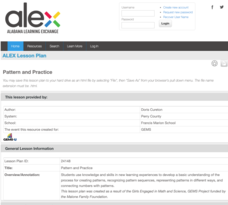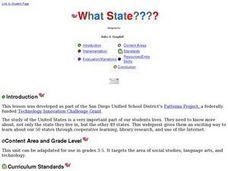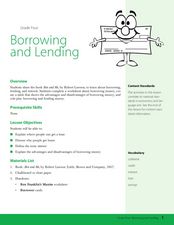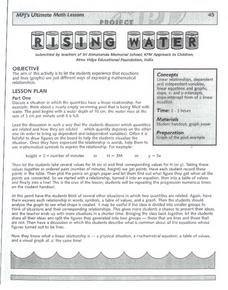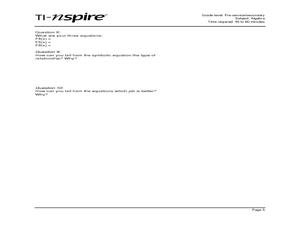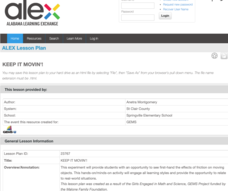US Institute of Peace
Simulation on the Israeli-Palestinian Conflict
Why do Israel and Palestine have a history of conflict? Learners find out by participating in a simulation. They work through a scenario and take on one of 27–30 roles. They put themselves in the shoes of people from Israel, Palestine,...
Reed Novel Studies
From The Mixed Up Files Of Mrs. Basil E. Frankweiler: Novel Study
Claudia Kincaid decides to run away to bring some excitement to her life, but she never expects the adventure she finds. A helpful study guide takes readers through the novel From the Mixed Up Files of Mrs. Basil E. Frankweiler....
Reed Novel Studies
Pictures of Hollis Woods: Novel Study
Scholars read about Hollis, an orphan in Pictures of Hollis Woods, and complete worksheet activities. Activities include using vocabulary words to complete sentences, answering comprehension questions, and writing poetry.
Reed Novel Studies
Tales of a Fourth Grade Nothing: Novel Study
Many turtle species can retreat their heads into their shells when threatened by predators. With the Tales of a Fourth Grade Nothing novel study, pupils conduct research to uncover other interesting turtle facts. As they explore Judy...
Reed Novel Studies
Skink No Surrender: Novel Study
The oldest turtle ever recorded lived to the age of 188! As it turns out, two characters from Carl Hiaasen's Skink No Surrender are fascinated by these shelled creatures. Using the novel study, scholars research three types of turtles...
DiscoverE
Water Pollution Cleanup
How do scientists determine the best method for removing pollutants from our water sources? Environmental scholars experiment with pollution clean-up options to discover which are the most cost-effective, fastest, and most thorough....
Alabama Learning Exchange
Pattern and Practice
Young scholars learn how to make patterns. Students first display their prior knowledge of patterns before delving into the lesson. They complete a worksheet and participate in a web-based class activity. They work in cooperative groups...
Curated OER
What State????
Students study the United States. They research not only the state they live in, but the other 49 states. This webquest gives them an exciting way to study about our 50 states through cooperative learning, library research, and use of...
Curated OER
Borrowing and Lending
Fourth graders investigate the advantages and disadvantages of borrowing money. In this financial awareness activity, 4th graders read the book Ben and Me and create a table displaying the advantages and disadvantages of borrowing money.
Curated OER
The Rock Family
Students research the characteristics of igneous, sedimentary and metamorphic rocks using the Internet. They evaluate websites for use before they organize the research information into a table. They use software to complete a concept map.
Curated OER
Floodplain Modeling
Students simulate the impact of fluctuating river volumes on structures and landforms. They experiment with table top-sized riverbed models and water. Students consider how human design can help mitigate the effects of a flood.
Curated OER
TE Activity: Survive That Tsunami!
Students examine the causes of tsunamis and observe a table top wave making machine. They make model houses while working in groups so that the can see how different construction types work. They discuss how engineers can design and...
Curated OER
Rising Water!
Students observe water change from a liquid to a gas state when heated and then return to its liquid stage when cooled. They learn that gas molecules move faster than liquid molecules. They discover physical properties that describe how...
Curated OER
Simulations
Students utilize simulation methods and other teaching strategies within elementary-level social studies classrooms. They identify methods of delivering social studies content that enables learners with special needs to learn from and...
Curated OER
So Sweet
Students compare sugar levels in cereals. In this nutrition lesson, students learn how to read a nutrition facts label, predict which products will have the most sugar, discover which cereals contain the most sugar and discuss their...
Curated OER
Watershed Landscape
Students demonstrate how water flows by building a human watershed using themselves. In this ecology lesson plan, students compare and contrast point-source and non-point source pollution. They write what they have learned from this...
Curated OER
TI-Nspire Activity: What Does Your Representation Tell You?
By learning to select the best representation for three meal plans, students compare three meal plans to determine the best choice. Data for the meal plans is sorted on a table, as an algebraic equation, and graphed on a coordinate grid....
Curated OER
Counting Animal Populations
Students learn how to count animal populations by the Mark and Recapture method. In this counting animal populations lesson plan, students begin by predicting amounts of different candies in a jar. Students then simulate using beans, two...
Curated OER
What's the Matter? (Grade 3)
Third graders organize information about the three types of matter and to reinforce concepts learned in the matter unit of the science curriculum. They use Inspiration software to create a concept map of the three types of matter.
Curated OER
As Good As Gold
Students find examples of the Golden Ratio on the human body through measurement. Additionally, students learn about the use of the Golden Ratio and the Golden Rectangle in art and architecture. A very interesting lesson plan for the...
Curated OER
You Are Smarter Than The Ads
Fourth graders examine advertising techniques and create original designs for advertisements in this three day, 4th grade art/social studies instructional activity. The instructional activity includes assessment ideas, resource...
Alabama Learning Exchange
Keep It Movin'!
Learners conduct an experiment to study friction. They complete a KWL chart on friction and conduct an activity about the amount of friction on a moving object. To conclude, pupils create a table or graph of the data collected and they...
Curated OER
The Living Environment
Students use a spoon, clothespin, scissors, and toothpicks to simulate how animals get food in their environment. In this environment lesson plan, students learn about the adaptations animals make in order to survive.






